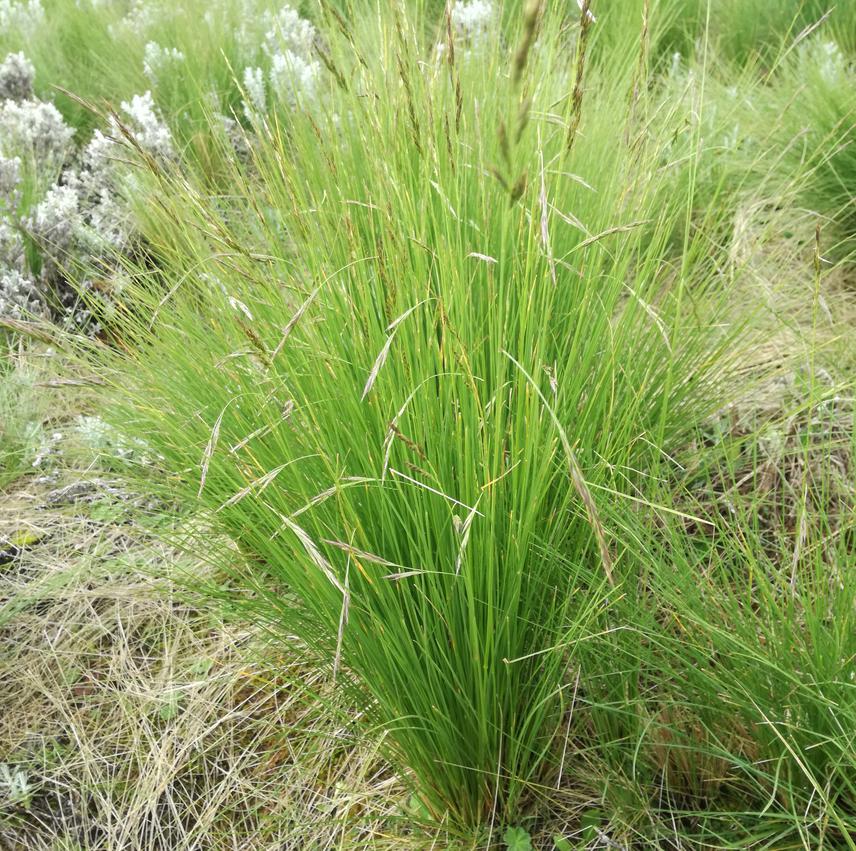Shambel Alemu Chengere
The encroachment of undesirable shrubs into grasslands is of global concern among ecologists, rangeland managers, and pastoralists. In the Ethiopian highlands, the invasion of Helichrysum species threatens ecosystem services in and around a community-based conservation area, particularly the provisioning of the Festuca grasses highly prized by both humans and endemic wildlife. Local communities and scientists have identified Helichrysum encroachment as the most critical sustainability concern in this area. Therefore, our goals are to 1) design a community-based monitoring program to gather ecological field experiment data on the current state of shrub encroachment in this area, 2) conduct a series of greenhouse experiments to compare with the field data, and 3) analyze these data to improve understanding of how these shrubs may continue to alter the landscape and livelihoods of the area for years to come.

Festuca at Seed bearing stage.
The diverse geography of Ethiopia gives rise to wide range of habitat in which we can find many endemic plants and animals. This has resulted in wide variations in rainfall, humidity, and temperature because of which the country comprises ten ecosystems that range from Afro-alpine at the highest elevations to desert and semi-desert ecosystems at the lowest elevations. The afroalpine ecosystem mostly covers the higher African mountains and serves as major water tower which is an essential source of water supply agriculture (Ahmed Abdikadir, 2013).
Guassa community conservation area (GCCA) is among those high altitude afro alpine habitat, in the central highlands in which we can find afro-alpine vegetation, endemic and rare fauna (like African wolf and Red fox) and endemic floral species. It is one of biodiversity ‘Hotspot’ area in the central high lands of Ethiopia (Engedasew Andarge, 2010).
This study will investigate the invasion of Helichrysum shrubs within a community-based conservation area, the Menz-Guassa Community Conservation Area (MGCCA) of Ethiopia. The invading shrubs threaten the health and functioning of the grassland, particularly by reducing provisioning of the highly valued Festuca grasses. The overall project is designed to not only create system understanding, but also to promote improved decision-making, communication, and learning (Kelly et al. 2013). MGCCA is part of the unique and highly threatened Afro-alpine biome, and it has been managed according to an indigenous resource management system for over 400 years. However, this management system is now in a state of transition, beginning with the government’s 1975 Agrarian Reform and continuing with the recent advent of tourism and improved access to markets.
Currently, Helichrysum species are increasing in abundance while Festuca grasses is decreasing in the study area. Thus this research initiated to find for the expansion of Helichrysum over the Festuca grasses. Moreover, this project comes at a critical time for the stakeholders of the Menz-Guassa Community Conservation Area (MGCCA), when improved communication and learning can be employed to promote sustainable and culturally appropriate outcomes. This long-term engagement with a scientific process will promote learning, which will improve the resilience and adaptive capacity of the conservation area.